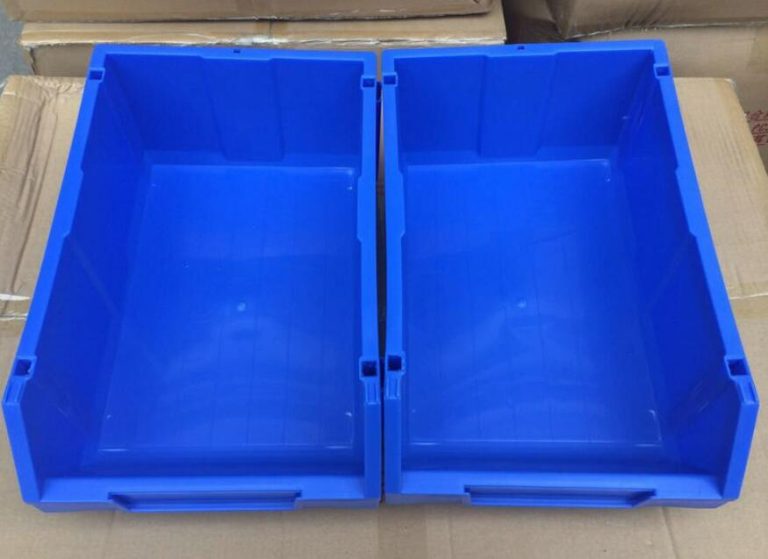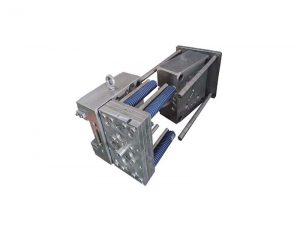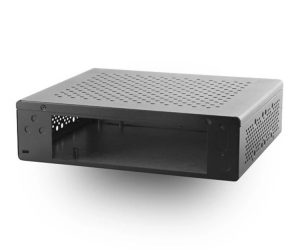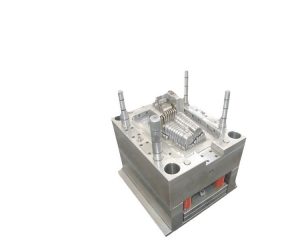As manufacturers seek to minimize their environmental footprint, implementing sustainability practices within injection molding is imperative. This guide outlines tangible actions shops can take to operate more responsibly from material selection to end-of-life. Discover how optimizing part and tool designs can reduce waste while boosting longevity. Learn strategies for maximizing machine efficiency and minimizing energy usage. Explore new material options like bioplastics and recycled resins. Whether you're looking to strengthen existing efforts or launch new sustainability initiatives, these impactful tactics will light the way towards greener injection molding.
Designing for Deconstruction
When designing new injection molded parts, manufacturers should keep deconstruction and recyclability top of mind. Using designs that can be easily disassembled allows parts to be reused or recycled at the end of their lifecycles. Some strategies to employ include using reversible fasteners instead of adhesive bonding whenever possible. This allows parts to be taken back apart easily. Designs should also minimize the use of different plastic resins in a single part, as mixing resins complicates recycling. Keeping part designs as simple as possible promotes recyclability. Manufacturers should also consider standardizing plastic resin types across an entire product line. This creates economies of scale for recycling streams and makes it easier to process recycled material back into new parts. Designing for disassembly and recycling helps injection molding operations operate in a truly sustainable manner.
Optimizing Machine Performance
Maximizing machine performance is key to greening injection molding operations. Properly maintaining injection molding equipment according to manufacturer recommendations can significantly improve energy efficiency. Conducting routine tune-ups ensures all aspects of the machine are operating as designed. This includes checking for worn machine components and replacing as needed. It also means calibrating temperature, pressure, and speed controls to ensure accurate operation. Optimizing machine parameters for each specific material and part geometry helps machines run at peak performance levels. Monitoring energy usage over time allows manufacturers to benchmark efficiency and identify any degradation. Installing energy management software provides visibility to consumption patterns and allows remote monitoring. This enables quick diagnosis of any issues impacting energy use. Regular review and cleaning of molds also improves part quality and machine throughput. Together, these measures help injection molding machines operate at optimal efficiency levels with less wasted material and energy.
Switching to Renewable Energy Sources
In the pursuit of sustainability, injection molding manufacturers are embracing a transformative shift by powering their operations with renewable energy. This strategic move stands as one of the most impactful ways to mitigate the environmental footprint of manufacturing processes. The infusion of solar, wind, hydro, or other clean and sustainable energy sources serves as a beacon, guiding the industry towards a greener and more responsible future.
On-Site Solar Solutions: Harnessing the Power of the Sun
A cornerstone of this eco-conscious transformation involves the installation of on-site solar panels, leveraging the abundant energy radiating from the sun. By adorning facility rooftops with solar arrays, manufacturers can generate power directly at the point of consumption. This not only reduces reliance on carbon-intensive fossil fuels but also promotes energy independence. The sun, a perpetual source of energy, becomes a partner in the manufacturing process, ushering in an era of sustainable energy production.
Renewable Energy Purchase Agreements: Collaborating with Clean Energy Farms
Manufacturers are also exploring collaborative ventures with nearby solar or wind farms through renewable energy purchase agreements. This innovative approach allows manufacturers to secure a consistent supply of clean energy without the need for on-site installations. By tapping into the expertise of dedicated clean energy producers, injection molding facilities align their operations with renewable sources, fostering a symbiotic relationship between industry and sustainability.
Renewable Energy Certificates: Offsetting Grid Electricity Usage
For those unable to generate renewable energy on-site, another viable option is the purchase of renewable energy certificates. This mechanism enables manufacturers to offset their grid electricity usage by investing in renewable energy projects elsewhere. It serves as a tangible commitment to sustainability, allowing manufacturers to contribute to the growth of clean energy infrastructure beyond their immediate operational sphere.
Financial Incentives and Long-Term Payoffs: Navigating the Green Investment Landscape
While the upfront costs of transitioning to renewable energy may pose a consideration, manufacturers can explore subsidies available in some regions to ease the financial burden. These incentives, coupled with the long-term benefits of stable, low-cost electricity, position renewable energy investments as strategic and financially prudent choices. The synergy of energy-efficient equipment upgrades with renewable sources creates a holistic and sustainable manufacturing model, aligning economic interests with environmental responsibility.
Leading the Charge: A Paradigm Shift in Manufacturing Practices
The vanguard of injection molding manufacturers is not merely dipping their toes into renewable energy; they are championing operations entirely powered by clean energy. This bold commitment represents a paradigm shift in manufacturing practices, illustrating that environmental stewardship and industrial innovation can coexist synergistically. As these leaders shrink their carbon footprints, they set a precedent for the industry, inspiring a ripple effect of sustainable transformation across the manufacturing landscape.
In essence, the switch to renewable energy sources in injection molding heralds more than an operational upgrade; it signifies a commitment to a greener, cleaner, and more sustainable future for manufacturing. It's a bold stride towards industry-wide environmental responsibility, showcasing that the injection molding sector can be a driving force in the global transition to a renewable energy-powered world.
Maximizing Material Utilization Rates
One method for minimizing material waste from injection molding involves maximizing material utilization rates. Operators should ensure machine parameters and mold tooling are tuned to pack cavities as densely and efficiently as possible. Wasteful air traps or voids that take up space inside parts should be designed out whenever feasible. Optimizing gate and runner systems helps direct plastic flow smoothly to minimize flashing and jetting. Automatic scrap removal systems keep machines running continuously. Post-production processes like trimming also need optimization to minimize trim waste. Recycling scrap material back into production helps maximize material yields. Keeping moisture content low helps plastic maintain flow properties. Together, these measures create a more efficient “first-time yield” process that minimizes wasted plastic and reduces material costs.
Selecting Recycled and Biobased Resins
Injection molders have numerous recyclable and renewable material options to choose from today. Using post-consumer or post-industrial recycled resins brings previously discarded plastics back into the manufacturing cycle. Many common resins like polyethylene, polypropylene, and polystyrene are readily available with recycled content. Recycled resins have a significantly lower carbon footprint than virgin plastic. Biobased plastics created from renewable sources like cornstarch or sugarcane are another alternative. Bioplastics help reduce reliance on fossil fuels. Molders should work closely with resin suppliers to validate material properties for their specific part designs. Ensuring proper drying and processing also guarantees quality. Sustainable material selection creates market demand that spurs innovation. Pairing recyclability-by-design with the use of recycled feedstock represents a wholly circular approach.
Extending Tool and Part Lifecycles
Maximizing tool lifecycles through preventative maintenance and repair reduces overall manufacturing costs and waste. Premium alloys, rigorous heat treatments and high-precision machining ensure mold cavities last for millions of shots with little degradation. Timely alterations maintain performance as designs evolve. Regular clearing of ejector pins and slides enhances longevity. Strict ventilation and temperature control protects against degradation. Rebuilding or re-plating extends use for decades. Remanufacturing also extends part lifecycles through repair, rebuilding or redesigning for new uses at product end of life. When combined with designing for recyclability, these measures minimize raw material needs through iterative product use.
Eliminating Hazardous Substances
Injection molding machines can release toxic chemicals into the environment if not properly managed. Manufacturers should avoid using plastic resins, lubricants, cleaners or other inputs containing hazardous substances whenever alternatives exist. This reduces environmental and health risks. For example, replacing polyvinyl chlorides (PVCs) removes chlorine gas emissions. Water-based or high flash point lubricants are safer than oil-based. Cleaners containing volatile organic compounds (VOCs) or other toxins should be swapped for safer enzymatic or citrus-based options. Material data sheets (SDS) help identity hazards. Fume extraction systems keep work areas safe. Waste is handled per regulations to prevent contamination. Certifications like UL ECOLOGO validate green formulations. Eliminating hazards protects employees and local communities while reducing regulatory compliance costs.
Improving End-of-Life Management
As plastic parts reach the end of usefulness, responsible management is key to close the loop. Take-back programs encourage customers to return parts for refurbishment or recycling. Dismantlers efficiently separate resins, metals, and other recyclables. Strong relationships with recyclers support consistent waste diversion. Brand owners lead through extended producer responsibility programs. Curbside recycling also expands recovery rates. Creating market demand for post-consumer recycled resin brings it back to manufacturing. Traceability technology tracks material cycles. Strategies like these champion efficient resource utilization over linear “take-make-waste” processes. Together, injection molders and value chain partners work to ensure plastics remain valuable resources.
Tracking KPIs and Carbon Footprint
To optimize sustainability performance, manufacturers must track key metrics over time. Energy, material, and waste outputs should be measured regularly. Key performance indicators (KPIs) like energy intensity, recycling rates, and first-time yield provide benchmarks. Tracking carbon footprint using validated calculation methods helps prioritize reductions. Data reveals impact of process changes and informs target setting. Life cycle assessments identify opportunities across value chains. Commercial sustainability tracking platforms digitize collection and reporting. Third-party certification validates programs. Sharing goals and progress builds transparency. Monitoring motivates continuous improvement. Aggregated industry data supports policy recommendations and innovation. Standardized reporting also satisfies growing customer demand for product carbon credentials. Quantifying sustainability is the first step toward meaningful reductions.
Educating Employees on Best Practices
A sustainability culture starts with an educated, engaged workforce. Training ensures operators understand how their daily tasks impact goals. For example, optimizing machine parameters to minimize energy waste. Workers are empowered to recommend innovations. Specialized roles like sustainability champions coordinate efforts. Communication shares progress and recognizes top performers. Training also improves understanding of sustainable material options and proper handling. Workers know to divert waste from landfills. Education instills environmental stewardship as a core value alongside safety and quality. Informed employees help optimize established programs and identify future initiatives. Leading by example inspires suppliers and customers to follow suit.





